32 movies that revolutionized VFX
These landmark movies took VFX to the bleeding edge
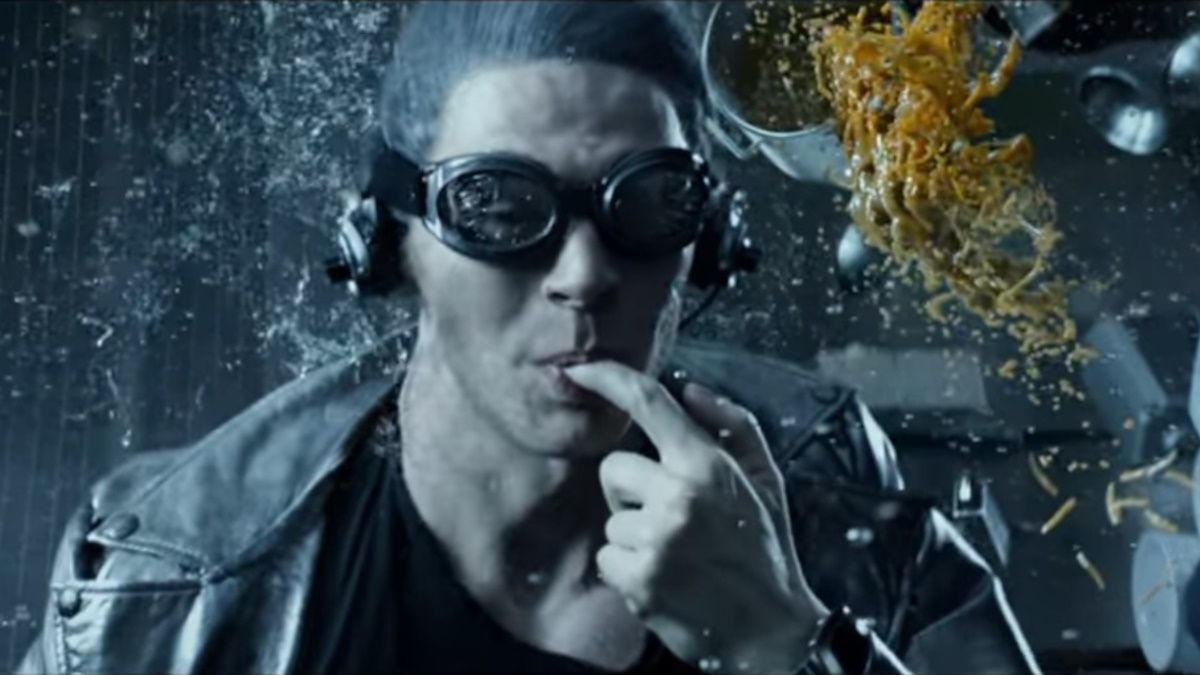
In its original form, the movies have always been about illusions. Unlike many other art form, movies strive hard to fool the audience into believing what they're seeing, and nothing has exemplified that mission more than the ongoing evolution of visual effects. Throughout movie history, some movies have pushed the envelope - and some of them deserve singular recognition.
Alfred Clark's 1895 picture The Execution of Mary, Queen of Scots is believed to be the movie that began cinematic visual effects history, with its innovation of… stopping the camera to replace a human actor with a dummy, and then resume filming to create the illusion of Mary's beheading by an executioner. It's crude and primitive by modern standards, but hey, that's how history works. Someone's gotta be the first.
The subsequent history of movies was marked by amazing leaps in visual effects development, from Georges Méliès to George Lucas. The rise and fall of stop-motion animation, the introduction of rotoscoping, and the big bang that were computers, you can practically trace humankind's technical sophistication entirely through how popular movies changed thanks to technology.
With visual effects more commonplace in movies than ever, here are 32 movies that revolutionized visual effects, or VFX.
32. Metropolis (1927)

Almost all visual effects-heavy movies owe a debt to Fritz Lang's Metropolis. The 1927 silent film sci-fi classic was based on Lang's sights of New York City skyscrapers, a cutting-edge architectural marvel when Lang visited Manhattan in 1924. An inspired Lang combined the progressive Art Deco movement with the ancient Biblical story of Babel to envision a distant dystopian future plagued by class warfare. The movie fittingly pioneered many techniques picked up from generations of filmmakers after Lang, including miniatures, camera rigs, and the Schüfftan process, an illusionary technique, mirrors make actors appear to occupy miniature spaces. Though Lang's film predates the existence of computers themselves, Metropolis undoubtedly foresaw the things to come.
31. Superman: The Movie (1978)

On the poster for Richard Donner's Superman: The Movie, the tagline promised: "You'll believe a man can fly." Thanks to the movie's revolutionary visual effects, audiences sure did. Shepherded by Colin Chilvers, Donner's movie convinced audiences that Christopher Reeve could actually fly up, up, and away thanks to state-of-the-art techniques in practical, miniature, and optical effects. In a 2018 retrospective interview with VFX Voice, Chilvers - who recalled that the movie's flying sequences were achieved through a combination of wire work and front and rear projections - observed that Superman's blue suit actually posed a problem for bluescreen compositing. Chilvers credits Roy Field, Creative Supervisor of Optical Visual Effects, for coming up with changing the color of Reeve's Superman suit to a different shade of blue, which wouldn't conflict with the bluescreen and could be edited to its original color in final grading.
30. 2001: A Space Odyssey (1968)
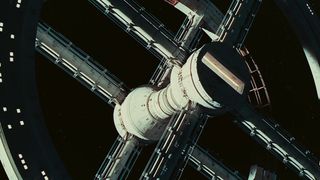
The thought of traversing deep space is exciting as it is frightening, and no movie has ever captured those sensations quite like Stanley Kubrick's 2001: A Space Odyssey. Among the many sequences the movie is known for, it's the "Stargate" sequence that still inspires filmmakers today. The movie's VFX supervisor was Douglas Trumbull, who figured out a way of producing a psychedelic corridor of lights and shapes that engulfed astronauts (and perhaps audiences) to the point of madness. Trumbull achieved the effect using a setup he called "Slit-Scan," which involved shooting moving footage composed of back-lit artwork while the camera lens shutter stayed open as the camera itself moved in the physical space.
Sign up for the Total Film Newsletter
Bringing all the latest movie news, features, and reviews to your inbox
29. Independence Day (1996)

The 1990s is an era between eras: The old school ways of matte painting and miniatures were still in predominant use, but computers were beginning to make all cinematic possibilities endless. Enter: Roland Emmerich's sci-fi blockbuster Independence Day. In its story about a modern day, large-scale alien invasion, the VFX team behind Independence Day - supervised by Volker Engel, Doug Smith, and Tricia Ashford - combined both tried-and-true techniques along with then cutting-edge computer work to create the movie's sensational setpieces, particularly the dogfighting action scenes and the final explosion of the Mothership. In a 2021 interview at Befores and Afters, Rob Bredow, who worked on the movie, described creating a program called Sparky, a procedural animation system written by himself and Peter Shinners that, in layman's terms, helped speed up work that used to be done entirely by hand.
28. The Abyss (1989)
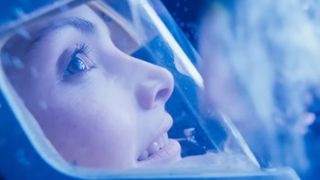
James Cameron is a passionate diver in addition to being a master filmmaker. His admiration for the ocean is felt throughout his movies, like Titanic (1998) and the Avatar series, but his 1989 epic The Abyss broke new ground. While The Abyss has loads of practical effects (like the use of small black beads floating on the surface of a giant pool to control light), it's still a VFX marvel in how the movie's artists replicated the feeling and sensation of an unpredictable moving element for one of the movie's most haunting moments: When aquatic aliens appear before the characters and imitate their likeness. Dennis Muren, with the rest of Industrial Light & Magic, were the artists who made the water look as real as can be in 1989. In a 2007 interview with Animation World Network, Muren recalled working on The Abyss: "Well, is it even possible to do that? That was the big thing I remember. And we ended up doing 13 shots in six months and it was pretty close to on budget. And it was amazing for that time that we could do it for that quality where it had to be perfect."
27. X-Men: Days of Future Past (2014)

When Evan Peters' Quicksilver cranked up his Walkman to stop bullets from hitting Wolverine and Magneto, he stopped everyone in their tracks. The mesmerizing slow-motion set-piece of the 2014 X-Men sequel turned a lot of heads around Hollywood, not only because of how cheeky it is ("Time in a Bottle" by Jim Croce is truly an inspired choice) but because it showed that even superhero tentpoles are a space for innovation. The scene was pulled off by VFX studio Rising Sun Pictures, along with The Third Floor who worked with director Bryan Singer on pre-vis. In a 2014 interview with TechRadar, Rising Sun Pictures' Adam Paschke said the team referenced the growing popularity of super slow-motion videos on YouTube. "We wanted to try and tap into the familiar high speed photography the everyday audience would be familiar with," Paschke said.
26. Starship Troopers (1997)

Paul Verhoeven's biting satire of facism is felt throughout his sci-fi romp Starship Troopers, in which human militaries fend off hordes of alien bugs. While Starship Troopers may not hold up as well as other movies, it doesn't change the fact that it was still a technical achievement when it was released in 1997. In the 2015 book Masters of FX by Ian Failes, Failes details VFX supervisor Phil Tippett, who had experience on Jurassic Park, and his collaboration with Verhoeven to pull off the movie's large-scale battle scenes with thousands of gigantic bugs. "Jurassic Park in some ways was actually easier to do than Starship Troopers because for the movements you have a paleontological record," Tippett said. "All the design work’s been done for you. But when you’re doing a fantasy character you have to back up and say, 'How does it actually work?'
25. King Kong (2005)
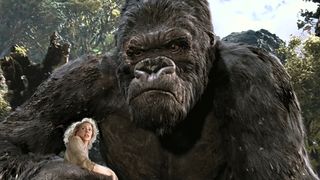
Kong was the Eighth Wonder of the World, but Peter Jackson's 2005 movie King Kong might be the ninth. In Jackson's extravagant remake of the 1933 silent classic, Kong comes to roaring life in incredible high fidelity that dazzled audiences at the dawn of consumer-grade high-definition TVs. Andy Serkis, who portrayed the similarly cutting-edge creature Gollum in Jackson's adaptation of Lord of the Rings, plays Kong; his performance was captured by Joe Letteri of Weta Digital, who said in a 2005 interview with Total Film: "We started off trying to design a character that was both a gorilla and a fantasy creature … We decided to start with a real gorilla, to really make him as believable as possible – not just physically but also emotionally."
24. Life of Pi (2012)

The decades leading up to Ang Lee's 2012 feature Life of Pi was marked by VFX innovations paved by blockbusters like Lord of the Rings and more. But Life of Pi found a new level of realism in its technical approach to rendering Richard Parker, the Bengal tiger who has a precarious relationship with stranded survivor Pi. Among the achievements by VFX house Rhythm & Hues: creating tiger fur. The team used subsurface scattering techniques to simulate light as it leaks through Richard's fut, which aided in making the Bengal tiger look like he's right there in front of audiences.
23. The Avengers (2012)

Superhero tentpoles are usually ground zero for visual effects innovations, and Marvel's landmark 2012 movie The Avengers was no exception. It's hard to pick just one achievement, but let's zero in on the famous Battle of New York set piece that closes the movie. Seamless integration of numerous CG aliens with human actors and creating a believable New York City cityscape that dot the windows of Stark Tower were just some of the superheroic tasks undertaken by both Industrial Light & Magic and Fuel.
22. Who Framed Roger Rabbit (1988)

Don't let the abundance of classic cartoon characters fool you. The 1988 black comedy classic Who Framed Roger Rabbit was on the bleeding edge in 1988, in its hybrid of physical actors (like lead Bob Hoskins) with hand-drawn cartoon characters, some of them icons like Daffy and Donald. While the movie wasn't the first to blend live-action footage with hand-drawn animation - the first was The Enchanted Drawing, released in 1900 - Who Framed Roger Rabbit was a monumental undertaking. As detailed in a 2017 feature published by VICE's Motherboard, the animation aspect of the film took a year to complete, involving unique machines built on set to perform the actions of several characters. These machines had to be designed in such a way that they'd be completely drawn over in painstaking post-production.
21. Sin City (2005)
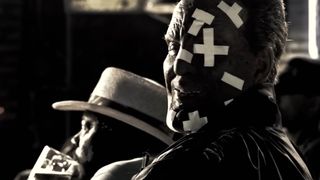
Frank Miller paid homage to his favorite noir pictures in his original comic book series Sin City. In 2005, his vision went full circle when director Robert Rodriguez adapted the comics to film, with an all-star cast including Mickey Rourke, Bruce Willis, Jessica Alba, Carla Gugino, Elijah Wood, and more. The movie notably strove to recreate the look and feel of the comics, and the filmmakers did far more than just turn the color off. A 2023 video essay by YouTube channel Nerdstalgic detailed how production took place entirely on green screen to enable the movie's high-contrast look. Sin City wasn't the first movie to make use of green screen, of course, but during its release in 2005, it was noteworthy for its degree of use.
20. District 9 (2009)
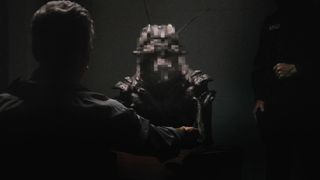
2009 was a busy time for visual effects cinema, with James Cameron's Avatar capping off the year in epic fashion. But the Oscar-nominated sci-fi feature District 9, from Neil Blomkamp, caught many people's attention, not just because of its independent production nor its reimagining of the alien invasion story as a politically charged parable. Image Engine, a scrappy visual effects studio based in Vancouver, was tasked with bringing the movie's many aliens to life, a task made extra difficult because of the movie's documentary feel. (In other words: shaky cameras.) In a 2009 interview with Studio Daily, VFX producer Shawn Walsh commented: "They're so banal, with a reality TV-era appeal, and you completely forget that there's an alien staring at you in that shot … District 9 was a real surprise to people going into the theater cold, who didn't know what to expect."
19. Cloverfield (2008)

At the height of the War on Terror, with on-the-ground news footage captured by handheld digital cameras, producer J.J. Abrams and director Matt Reeves imagined a colossal Godzilla-like monster seen through that proverbial (and quite literal) lens. The result was Cloverfield, a 2008 monster flick with a unique verite style a la The Blair Witch Project a decade earlier. Of course, the two movies had huge differences, namely a giant monster and the destruction of New York City. Even in an era when CG filmmaking was commonplace, Cloverfield was innovative in its artistic blend of incongruous styles and its technical execution that similarly married real-world environments and sets with digital elements, like the severed head of the Statue of Liberty flying through a city block.
18. The Curious Case of Benjamin Button (2008)
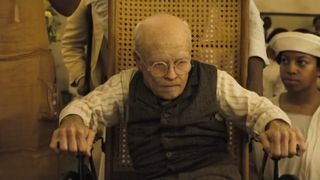
Movies throughout the 2010s developed a fascination with using digital effects to alter an actor's age. Movies like The Irishman and Avengers: Endgame (both in 2019) used effects to make actors look younger (Robert De Niro) or older (Chris Evans) than they were. But that arms race began in David Fincher's sweeping romantic drama from 2008, The Curious Case of Benjamin Button. Much of the movie's aging effects were the responsibility of Digital Domain, who pioneered work in digital "makeup" that made Brad Pitt look "old" (but as a child, since his character Benjamin Button ages in reverse). In a 2009 article from WIRED, Digital Domain revealed it strove to capture as much information from Brad Pitt's face as possible and thus used a "then-unproven" technology called phosphorous capture that, according to WIRED, "involves applying phosphorescent powder to a face, exposing it to black light, and imaging it to create 3D-data" of Pitt's expressions. At the 81st Academy Awards, the film won (among other trophies) the award for Best Visual Effects.
17. Interstellar (2014)

Christopher Nolan's science fiction masterpiece Interstellar is centered around mankind pushing into the great unknown, throwing caution and hope and even sanity through the black holes that scatter outer space. The problem: No one in human history has physically been inside a black hole. (Like, have you been through a black hole?) Creating and depicting black holes - and sure, the faraway alien planets too - with adherence to scientific accuracy was the daunting job of DNEG, whose work won them the Oscar for Best Visual Effects at the 87th Academy Awards.
Observed VFX producer Peter Franklin in an interview with Art of VFX: "One of the big problems is that a black hole is, well, black! It has no surface features, no highlights, no low lights, just black. But then I read about the accretion discs that often form around black holes – huge whirling discs of gas and dust that are sucked in by the black hole’s immense gravity. As the material gets closer to the hole it heats up with friction, releasing vast amounts of energy and shining brilliantly. We realized that we might be able to use this to define the shape of the sphere of the black hole."
16. The Day After Tomorrow (2004)

When filmmaking VFX reached new heights in the 2000s, disaster movies came roaring back such as in Roland Emmerich's 2004 hit The Day After Tomorrow. In a retrospective interview with SYFY Wire in 2023, VFX supervisor Karen Goulekas recalled the movie's premise of freak weather hitting major cities as particularly difficult to make the elements look photorealistic. "There was nothing that felt like a cakewalk," Goulekas said. "That was daunting stuff back then. I was excited at the challenge, but I was like, 'Oh, sh**.'"
15. Pirates of the Caribbean: Dead Man's Chest (2006)
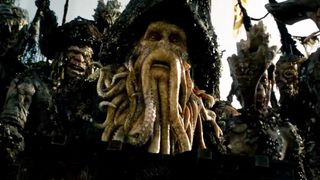
Is there a CGI character that looks better than Davy Jones? Years after the release of Pirates of the Caribbean: Dead Man's Chest in 2006, Davy Jones still holds his own against so many other VFX creatures, from Gollum to Thanos. On ILM's website, the studio describes how it achieved the effect of Davy Jones. First, it details Imocap, a "lightweight, low-footprint" system that makes it possible "for actors to perform motion-capture on location." This surely helped director Gore Verbinski work directly with his actors on the actual sets, rather than working with them separately much later at a mo-cap studio. ILM also describes Davy Jones' octopus beard. The movie's creature artists, ILM says, "put in wonderful animation controls that allowed animators to move the tentacles in very specific ways." A custom program was developed "that would drive the individual joins between the segments of the beard with a whole variety of perimeters for high-level control that would dictate emotional changes."
14. Transformers (2007)

There's more than meets the eye with Transformers. Michael Bay's bombastic blockbuster from 2007 stands the test of time with aging-like-wine visual effects that made the Autobots and Decepticons look as real as Megan Fox. In a 2017 interview with VFX Voice to mark the franchise's tenth anniversary, VFX supervisor Scott Farrar said that part of what made his team's work age well is that the very designs of the Transformers look like real car parts. After junking the original concept art, which made the Transformers look like organic, gooey aliens, Farrar and his team started referencing car parts to "get our asset team building the models to use those pieces to build our robots."
Farrar's instincts proved right when he later saw the scene where Optimus Prime looks into Shia LaBeouf's upstairs bedroom. "[Y]ou get super, super close to the head, and I myself was amazed and thrilled by how good it looked. It looks perfect up close and we were a foot away from this shiny chrome face. I thought, alright, this is very cool."
13. Guardians of the Galaxy (2014)

It would be one thing if Marvel's funky sci-fi hit from 2014, Guardians of the Galaxy, was just a space movie. But with the characters Rocket and Groot, being a gun-toting raccoon and a talking tree respectively, the filmmakers - including VFX supervisor Stephane Ceretti - were doing anything but dancing to "Come and Get Your Love." In an article by FX Guide from 2014, Ceretti explained how director James Gunn approached the challenge using clean plates and stand-in actors (including his brother, actor Sean Gunn, as Rocket). "The most important thing for us,” said Ceretti, “was to make sure all the acting would be believable and that the actors would be able to respond to another actor."
12. Pacific Rim (2013)

The tokusatsu genre is characterized by low-budget effects, but cinematic auteur Guillermo del Toro cranked up the dial with his 2013 sci-fi blockbuster Pacific Rim. Working with VFX studio Rodeo and ILM, del Toro made Pacific Rim a true colossus in the world of visual effects filmmaking. The main attraction for Pacific Rim was making the movie's array of "Jaeger" machines, Gypsy Danger especially, feel like characters while still behaving like robots, all while standing hundreds of feet tall. In a 2013 interview with Animation Mentor, composting lead Chris Balog detailed the titanic work it took to render Gyspy Danger, but admitted to how much fun it all was. "We had a great director with great energy," Balog said. "It felt very collaborative. And, the work itself was great. A monster bursting through a building? Yeah, I’m up for that. Giant robots fighting giant monsters in giant cities and oceans. For an artist, what’s not to like?"
11. Gravity (2013)

Alfonso Cuarón's heart-pounding thriller Gravity, where Sandra Bullock plays an astronaut free-floating in space who tries to make her way back down to Earth, is distinct for its long continuous shots. The movie's mesmerizing visual effects were executed by Tim Webber and his team at Framestore, who used CGI to simulate the vastness of space (about 30 million stars are in the movie, according to Framestore's website), the weightless properties of space, as well as realistic depictions of NASA space stations. This was all in concert with the movie's cinematography, with cinematographer Emmanuel Lubezki, whose camera moved in and around Bullock to achieve the illusion that Bullock is floating for real in space.
10. Inception (2010)

With a movie like Inception, it's hard to pick which moment of visual effects is worth singling out. The movie's seamless blend of computer-generated imagery (like manipulating an entire cityscape folding like a piece of paper) and practical effects (like Joseph Gordon-Levitt's hallway fight) define one of the most arresting movies of the 2010s. But the "exploding" French cafe takes the cake. How the filmmakers pulled off the scene was broken down in a DVD/Blu-ray special feature, where the producers and effects artists described the scene by combining good old-fashioned air cannons with VFX to make the objects explode in mid-air; director Christopher Nolan instructed the visual effects team to think of the objects as floating underwater instead of flying in the air, and to implement a "fractal" quality, to give rhythm to the destruction instead of just one big kaboom.
9. Blade Runner (1982)

Miniatures were already in popular use for effects-heavy movies when Blade Runner hit theaters in 1982. (Star Wars says hello.) But Blade Runner, directed by Ridley Scott, took things up a notch for the 1980s with an advanced use of miniatures - like implementing forced perspective into their architecture - mixed with practical effects (smoke, lights, matte paintings, etc.) to create a dark, dystopian Los Angeles. Being such a seminal movie for science fiction filmmaking, there exist numerous making-of specials that unpack Blade Runner's effects work, which were primarily overseen by legend Douglas Trumbull (who also worked on 2001: A Space Odyssey and Close Encounters of the Third Kind), who did it all in an age before computer effects were in popular use.
8. The Lord of the Rings (2001-2003)

The visual effects accomplishments in Peter Jackson's Lord of the Rings are as vast as J.R.R. Tolkien's writings. While the trilogy is a famous example of cinematic forced perspective (to help sell the size differences of Hobbits to humans), it's also a visual effects marvel, such as with the character Gollum. Weta pushed the technical envelope to transform actor Andy Serkis, undoubtedly the leading motion-capture actor in all of Hollywood, into the tragic creature Gollum. Beyond Gollum, the trilogy's large-scale battle scenes and numerous impossible creatures all make a case that Lord of the Rings, while a fantasy, is also a marvel of science.
7. Star Wars Episode I: The Phantom Menace (1999)

Star Wars and visual effects go hand-in-hand. Industrial Light & Magic, one of the preeminent visual effects houses in the world, came to existence entirely because of Star Wars. While the '77 original movie is a pure exhibition of practical effects and rotoscoping magic, it still reflects a forward-thinking vision by George Lucas who so clearly yearned to be on the bleeding edge. (Look no further than in 1997, when Lucas jumped at the chance to tweak the movies using modern technology.) And so it was when Star Wars stood at the dawn of the 21st century with the first of Lucas' prequel trilogy, beginning with Star Wars Episode I: The Phantom Menace in 1999. From the movie's many aliens (including and especially Jar Jar Binks, played by Ahmed Best), and alien environments, not to mention a refined vision of lightsabers and a standout "podracing" set piece, The Phantom Menace was like looking into the next decade of movies.
6. Jason and the Argonauts (1963)

You can't talk about the visual effects industry without mentioning Ray Harryhausen. Inspired by repeat viewings of the 1933 hit King Kong, Harryhausen grew up to refine the wheel of visual effects starting with the 1953 movie The Beast From 20,000 Fathoms. 10 years later, Harryhausen was in charge of the effects for Don Chaffey's fantasy epic Jason and the Argonauts, a film widely considered as Harryhausen's finest work. The movie's standout set pieces, namely Jason's battle with sword-wielding skeletons (all animated by Harryhausen) - a startling blend of human actors "interacting" with impossible characters - have been studied and referenced by generations of visual effects artists. Anytime you see a 21st-century superhero stare down an alien, it's a feat that traces itself back to what Harryhausen pulled off in '63.
5. The Matrix (1999)

With The Matrix, the Wachowskis hacked the future of Hollywood with an unmatched vision that mixed the surreality of Japanese anime with Hong Kong action flicks. Thanks to The Matrix's story all about reality being little more than a pre-programmed simulation, the movie dropkicked unsuspecting moviegoers with mind-melting effects that reboot the laws of physics. Inspired by John Woo's taste for slow-motion, the Wachowskis - with VFX supervisor John Gaeta - turned up the volume with standout "Bullet Time" sequences, which were accomplished with a refined take on stop motion filmmaking (including literally hundreds of cameras) with experimental computer work.
4. Avatar (2009)

You could write an entire book around the VFX revelation that was James Cameron's Avatar. The director who routinely pushes the technical envelope went whole hog with Avatar, his original science fiction epic with urgent themes about ecology, Indigenous rights, and the evils of capital-driven colonization. The visual effects of Avatar were handled by Weta Digital, who - along with director Cameron - developed, among other things, cutting-edge techniques to accurately capture living actors into digital characters. In a 2010 article by Popular Mechanics, it was revealed that Cameron had imagined a way to collect as much data from actors' performances as far back as 1995: strapping a tiny camera to the front of a helmet to track every facial movement. "That really makes a closeup come alive," Cameron said. Truly there is a planet's worth of discovery that Avatar fostered, and we're only scratching the surface of the unobtanium.
3. Terminator 2: Judgment Day (1991)

When Robert Patrick's T-1000 phases through prison bars and transforms his limbs into liquid swords, audiences knew that Terminator 2: Judgment Day was on a different level. In a 2017 oral history feature on VFX Blog, ILM staff who worked on the effect recalled how the T-1000 pushed technical possibilities to the absolute limit. (ILM worked alongside Stan Winston Studio.) Said software developer Eric Enderton: "It was a really rare situation where you knew the film was going to be big. That hardly ever happens. We worked on stuff that we thought was going to be terrible and it turned out to be great, and then some things that went more the other direction, but this was one you just knew it was going to be big."
2. Jurassic Park (1993)

It almost doesn't get any bigger than Jurassic Park. Steven Spielberg's thrilling blockbuster and warning against the hubris of science notably revolutionized computer-generated imagery in Hollywood movies, with Jurassic Park magnificently realizing dinosaurs in a way they'd never been seen before. (Move over, King Kong.) While ILM, who worked on the movie, had already made amazing strides through movies like The Abyss and Terminator 2: Judgment Day, Jurassic Park marked another leap forward; originally, the dinosaurs were going to move via traditional stop-motion animation, but thanks to ILM's breakthrough CG, the experienced animators applied their craft to CG which helped sell the illusion of the dinosaurs as real, living things. The VFX accomplishments from Jurassic Park could fill an entire college course, so let's just say: Thanks to Jurassic Park, we've never looked at dinosaurs the same way again.
1. Tron (1982)

In the early 1980s, computers and video games had a serious foothold in the American imagination. The popularity of arcades and the Atari 2600 console made games feel like standing at the gates to a multiverse of virtual worlds. So it is fitting that the 1982 Disney movie, Tron, is a visual effects marvel that changed how movies look and feel forever, never mind that the movie only looks that way for about 15 minutes of screentime. While the movie itself only received lukewarm reviews for its story, critics correctly pointed out the movie's technical achievements in its tale about a video game developer who "enters" a program, where arcade games play out like ancient Roman coliseums. In a 2022 article for The Guardian, director Steve Lisberger said that the movie was a marriage between old and new school animation. "We were the bridge from analogue to digital, and that is a unique thing," Lisberger said. "It was unlike any other movie that had been made, and no movie will ever be made like this again."

Eric Francisco is a freelance entertainment journalist and graduate of Rutgers University. If a movie or TV show has superheroes, spaceships, kung fu, or John Cena, he's your guy to make sense of it. A former senior writer at Inverse, his byline has also appeared at Vulture, The Daily Beast, Observer, and The Mary Sue. You can find him screaming at Devils hockey games or dodging enemy fire in Call of Duty: Warzone.


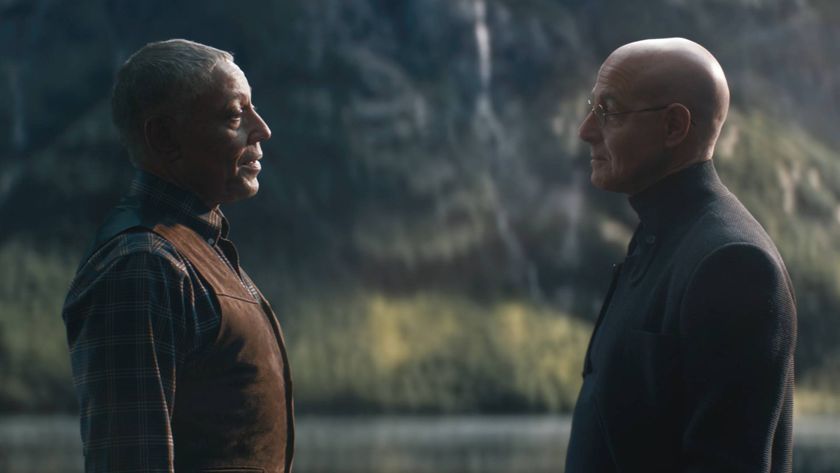

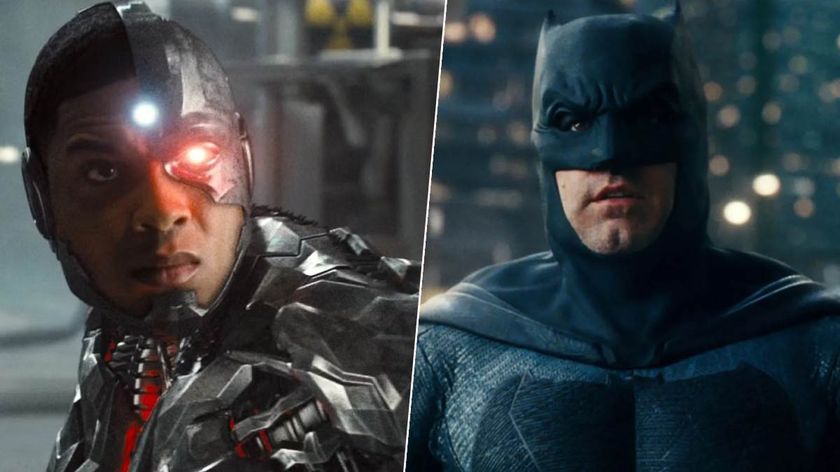
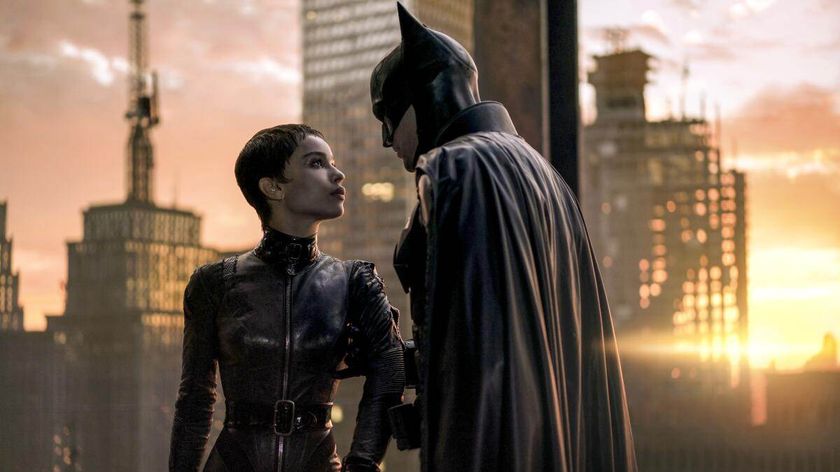







James Bond will reportedly remain male and British under new Amazon management, as Pierce Brosnan says it's "a given" that the next actor must not be American

The Electric State may be the Russo brothers' most challenging VFX project yet, but stars Stanley Tucci and Giancarlo Esposito say it's one of the easiest films they’ve ever done










